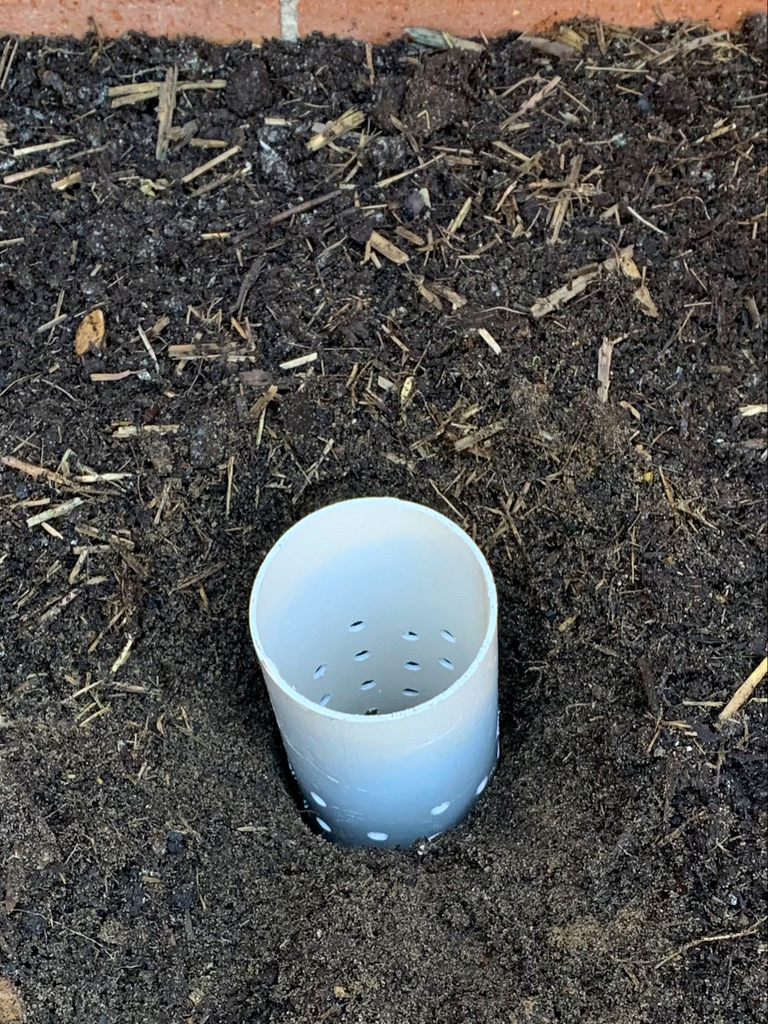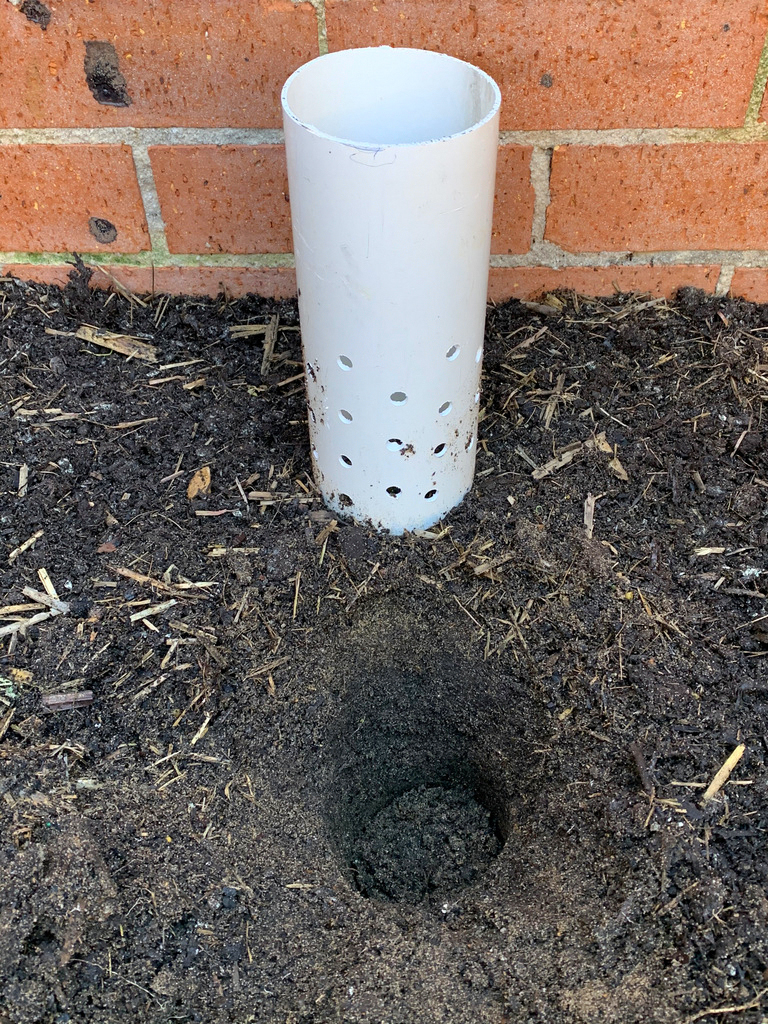They say build it and they will come. When I prepared my raised gardening beds for spring, I put in a diy in-ground worm farm using recycled materials. Here’s how to do it.

DIY In-Ground Worm Farm – Photo © The Gourmantic Garden
In my tiny courtyard garden, space is a luxury. I’m forever juggling and playing Tetris with my potted plants, trying to find the best location based on my micro-climate or chasing the warmth of the sun.
As much as our household is into reusing, repurposing and recycling (long before it became a movement), having a compost bin is out of the question and I’m not keen on a Bokashi system which is basically a fermenter.
Before I bought a worm farm (subject of another article), and in the spirit of sustainability in the garden, I built an in-ground worm farm from materials I salvaged from council clean up.
What is an In-Ground Worm Farm

In-Ground Worm Farm Bucket – Photo © The Gourmantic Garden
An in-ground worm farm (also known as worm tower) consists of a length of pipe submerged in the ground or raised garden bed with holes drilled in the sides half way up. It allows access to the worms which are attracted to the food scraps which in turn, they convert to worm juice and worm poo, interacting directly with the surrounding soil.
There are a few commercially available in-ground worm farms or worm towers but since I’m all about sustainability in the garden (as well as sustainability in the home bar), reusing and repurposing materials destined for the tip, I tried the DIY approach using PVC pipe that went in ground, as well as a small plastic pail with a lid which was installed in a raised garden bed.
The soil in my garden is very shallow and sits on concrete. with the exception of the raised beds, the locations I chose for the in-ground worm farm are only 30cm deep. Using a saw, I cut a length of PVC pipe slightly longer than 30cm, drilled holes in the sides half way up the length, pushed it in the ground and filled it with compostable materials. Initially, I used a small terracotta saucer as a lid weighed down with a rock but later bought a PVC cap to fit.
Here are the step by step instructions for making an inexpensive DIY in-ground worm farm or worm tower.
DIY In-Ground Worm Farm

Dig a Hole – Photo © The Gourmantic Garden
Note: The steps show here are for the PVC piping but apply equally to a small bucket with a tight fitting lid.
What You Need
- a length of PVC pipe (I used 90mm wide left out for council clean up)
- a PVC cap to fit OR a small terracotta plant saucer + a rock from the garden
- a hand saw
- a hand drill
- sandpaper
Method
- Pick your spot. A cool and sheltered spot in preferable but my raised beds get direct sun so I made sure the in-ground worm farm is covered with mulch.
- Using a saw, cut the length of the PVC tube to the desired length. In my case, it was a little over 30cm which is as deep as my garden soil gets.
- Drill 5mm holes around in the sides no more than half way up the tube.
- Using a piece of sandpaper, smooth the edges of the holes.
- Dig a hole deep enough in the ground and place the PVC tube all the way down with the holes side down until the top is about 5cm higher than the soil.
- Back fill with soil.
- Add worm food. (see below)
- Cover with an upside down terracotta saucer weighed it down with a rock, or a PVC cap to fit.
What Constitutes Worm Food

DIY In-Ground Worm Farm – Photo © The Gourmantic Garden
Just like an ordinary compost or worm farm, you need the right ratio of brown to green, and in this case, it’s as simple as 1:1.
Greens & Browns
Greens are regular organic household waste such as vegetable peelings, fruit cores, leafy green vegetables, crushed eggshells, coffee grounds and tea leaves.
Browns are carbon-based materials such as egg cartons, empty toilet paper rolls, dry leaves, paper bags, shredded paper and newspaper (not glossy).
The use of citrus, onion, garlic, dairy and meat products is often debatable so I give them a miss.
To Fill your DIY In-ground Worm Farm

DIY In-Ground Worm Farm – Photo © The Gourmantic Garden
- Add a little soil or compost followed by shredded paper or an egg carton cut into small pieces.
- Add the worm food such as ground egg shells, fruit and vegetable scraps.
- Top with a damp newspaper or Hessian fabric.
- Secure the in ground worm farm to prevent rodents getting in.
- Cover with mulch.
Occasionally, I add a little water to the mix or simply water the soil around it.
Note that I did not add any worms. Over time, they come along and start converting food scraps into rich nutrients. In fact, I forgot about one of my worm towers for several months, and when I opened it, all that was left was compost.
And there you have it, an inexpensive way of converting materials destined for landfill into a reusuable resource in the garden. Build it and they will come.
You may also like… 30 Ways to Reuse Repurpose & Upcycle in the Garden

